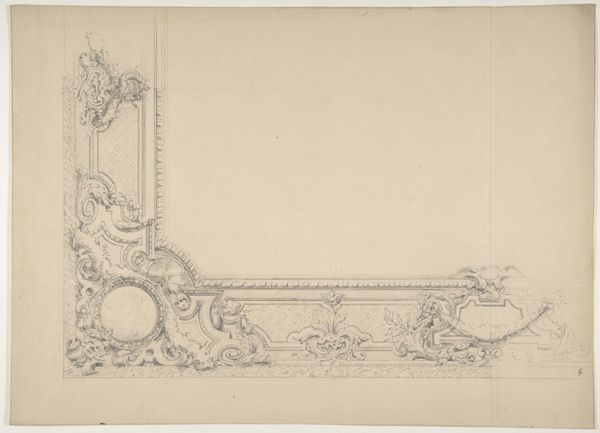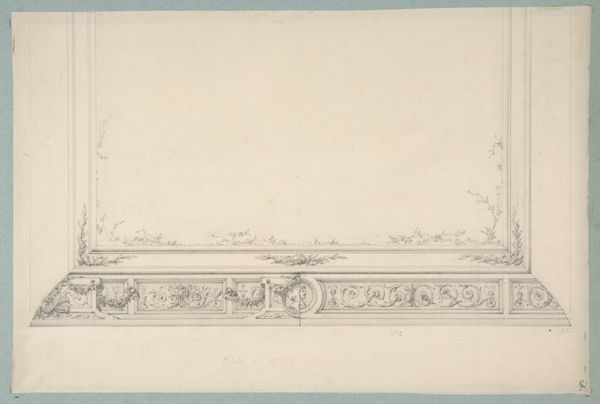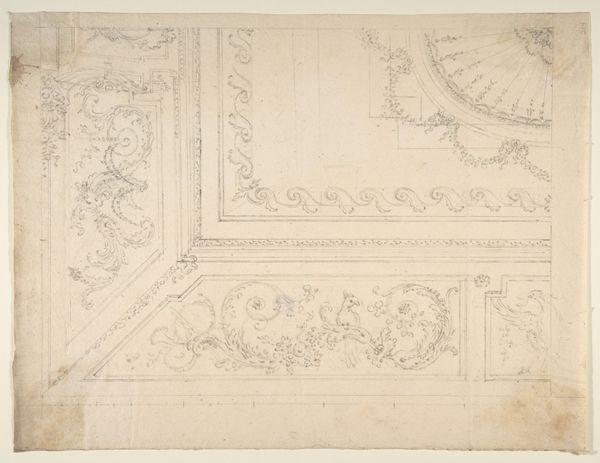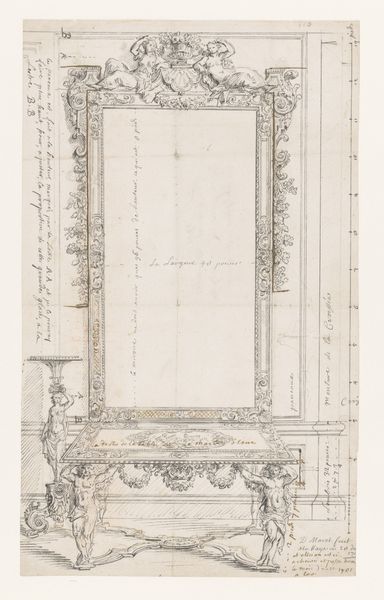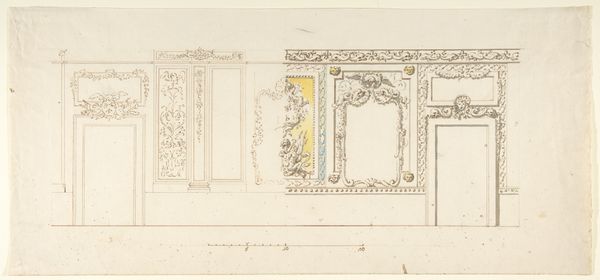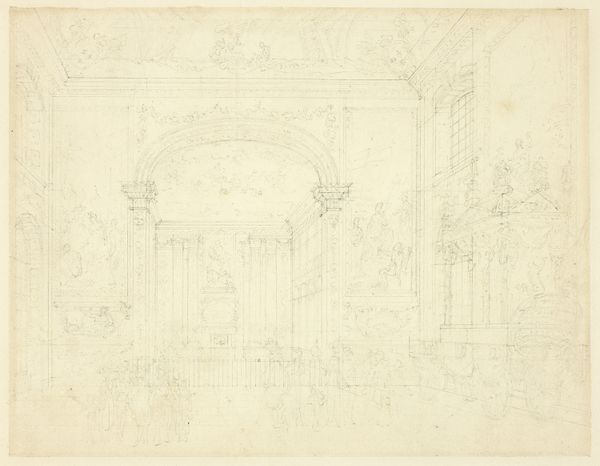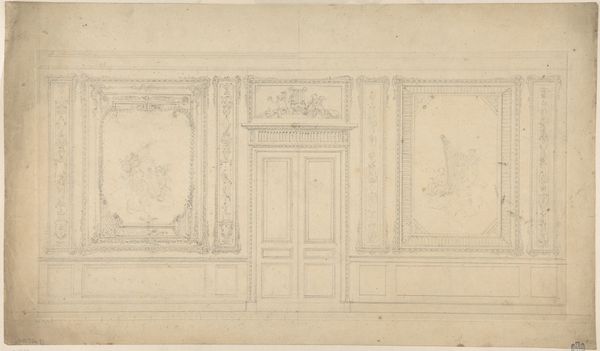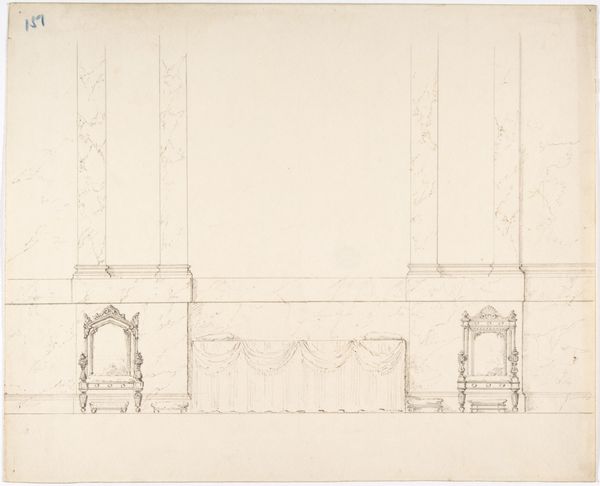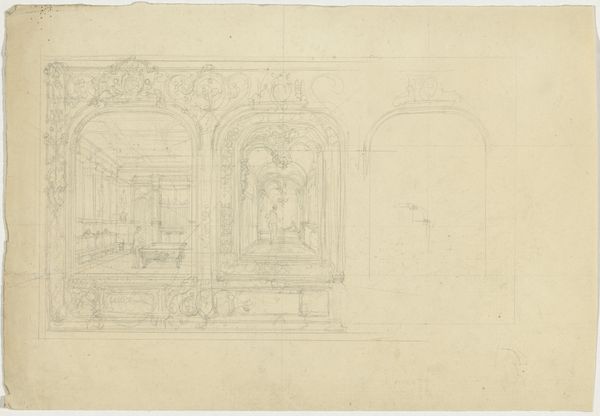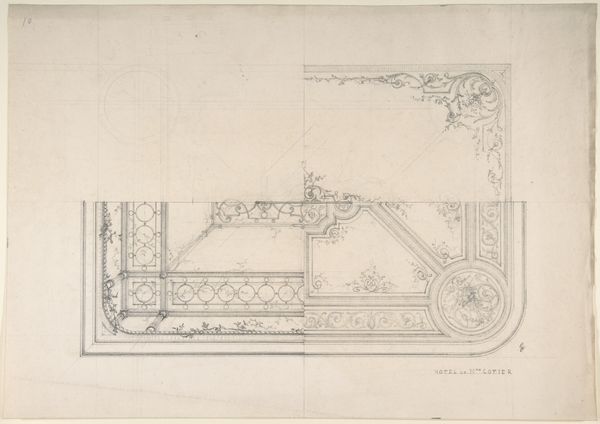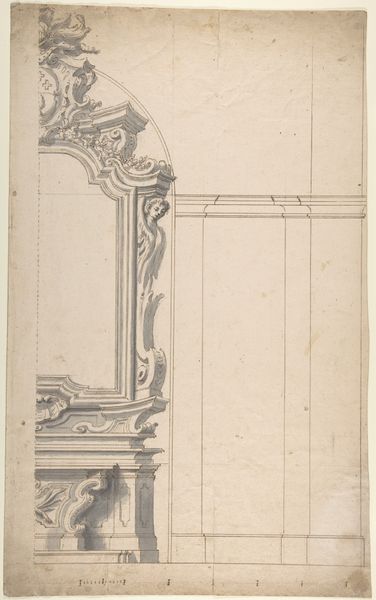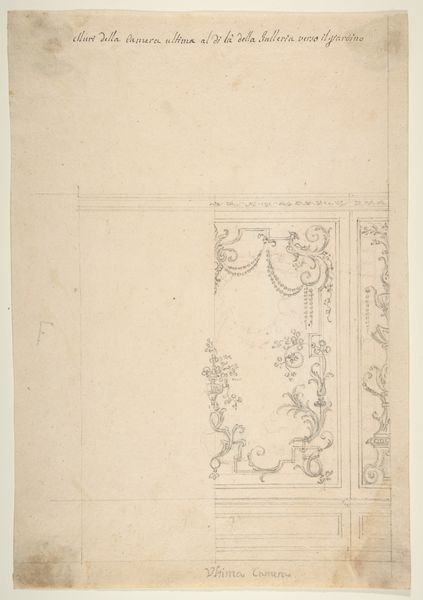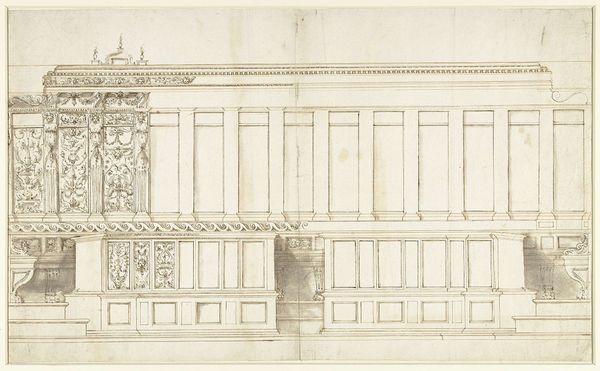
Partial design for a ceiling to be painted with a trompe l'oeil iron railing and roses 1850 - 1900
0:00
0:00
Copyright: Public Domain
Curator: Here we have a preparatory drawing, "Partial design for a ceiling to be painted with a trompe l'oeil iron railing and roses." Attributed to Jules-Edmond-Charles Lachaise, it likely dates from the latter half of the 19th century. You can find it on paper, skillfully rendered in pencil. Editor: Ah, instantly calming. The muted tones give it such an airy, dreamlike quality. It's as if you could simply float up into that architectural fantasy. Curator: Absolutely. It represents a convergence of artistic practices and design – moving from the atelier to a domestic or public interior. We must also consider the material implications: pigment production, paper milling, the labour required to install such a grand illusion. Editor: Imagine lying beneath this ceiling. I’d feel suspended between reality and the artist’s imagining – a constant, gentle dance with perception. The implied space, tricked into seeming real. I wonder if it would cure insomnia. Curator: Trompe-l'oeil was a sought-after element for those wishing to portray status; this suggests it may be an element from upper-class buildings that can offer viewers an aesthetic of luxury. Editor: I wonder about the artisans though. Did they find joy in contributing to such aspirational displays, or was it simply a job, piecework adding to the vast disparities of the era? Perhaps the repetitious ornamentation became a sort of mantra as their hands traced rose after rose. Curator: That invites important questions about production, visibility, the artisan versus the "artist," and class relations of the era – essential factors when viewing. Editor: Yes. These drawings also make you consider their afterlife too, as historical object. This one ended up in a museum – another step in its material journey. I'll leave here wondering whether that imagined tromp l’oeil iron railing kept out all the wrong sorts of visitors for its patron back when it was actually up there. Curator: Precisely. Contextualizing it reminds us that art exists within, and is influenced by, intricate networks of labor and aspiration. Editor: A very evocative proposition.
Comments
No comments
Be the first to comment and join the conversation on the ultimate creative platform.
